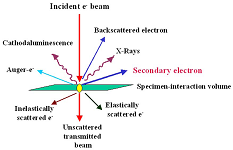
Asia Pacific Academy of Science Pte. Ltd. (APACSCI) specializes in international journal publishing. APACSCI adopts the open access publishing model and provides an important communication bridge for academic groups whose interest fields include engineering, technology, medicine, computer, mathematics, agriculture and forestry, and environment.

Quantification of chlorpyrifos in aqueous samples by liquid-liquid microextraction and gas chromatography using a µ-ecd detector
Vol 4, Issue 2, 2023
Download PDF
Abstract
The evaluation of contaminants present in the environment is a recurring theme at the international level, which is why it is imperative to develop new methodologies for the extraction of analytes from matrices such as surface water, with a low impact on the environment. Chlorpyrifos (CP) is an organophosphate compound widely used for pest control, toxic to living organisms, which can be mobilized from soils to different water sources. Dispersive liquid-liquid microextraction (DLLME) can be considered as a methodology with green analytical chemistry characteristics, due to its low solvent and time consumption. The objective of this work was to optimize DLLME for the analysis of CP in water samples. For the extraction, methanol was used as dispersing agent and CS2 as extracting agent, and five extraction times were evaluated: 5, 10, 15, 15, 20 and 25 min. The extracts were analyzed by gas chromatography with electron microcapture detector (GC-μECD). The results of the shaking time evaluation showed that, for the shaking times of 10 and 15 min, a CP recovery percentage of 108% and 88% was obtained, respectively, with a detection and quantification limit of 18.3 and 22.4 μg/L, respectively, and a precision expressed as relative standard deviation of less than 14.2%, which is acceptable for this type of extraction. It can be concluded that the DLLME methodology associated with GC-μECD is a suitable alternative for the quantification of CP in aqueous matrices with a low environmental impact.
Keywords
References
- Martínez J, Pablos MC, Garrido A, Arrebola FJ. Pesticide trace analysis using solid-phase extraction and gas chromatography with electron-capture and tandem mass spectrometric detection in water samples. Journal of chromatography A. 2000; 867(1): 235-245.
- Lambropoulou D, Sakkas V, Albanis T. Validation of an SPME method, using PDMS, PA, PDMS-DVB, and CW- DVB SPME fiber coatings, for analysis of organophosphorus insecticides in natural waters. Analytical and bioanalytical chemistry. 2002; 374(5): 932-941.
- ATSDR. Public health summary: chlorpyrifos. Available online: http://www.atsdr. cdc.gov/en/phs/en_phs84.pdf (accessed on 1 October 2021).
- Márquez S, Mosquera R, Herrera M. Study of the absorption and distribution of chlorpyrifos in hydroponically grown Kikuyo grass (Pennisetum clandestinum Hochst ex chiov.) plants. Revista Colombiana de Ciencias Pecuarias. 2010; 23(2):158-165.
- Mackay D. Multimedia Environmental Models: The Fugacity Approach, Second Edition, 2nd ed. CRC Press; 2001.
- Giesy J, Solomon K, Coats J, et al. Chlorpyrifos: Ecological Risk Assessment in North American Aquatic Environments. In: Ware GW (editor). Reviews of Environmental Contamination and Toxicology. Springer, New York, NY; 1999.
- Environmental Protection Agency (EPA). Revised chlorpyrifos preliminary registration review drinking Waters assessment. Available online: https://www.regulations.gov/document/EPA-HQ-OPP-2015-0653-0454 (accessed on 1 October 2021).
- Armenta S, Garrigues S, Esteve-Turrillas FA, et al. Green extraction techniques in green analytical chemistry. TrAC Trends in Analytical Chemistry. 2019; 116: 248-253. doi: 10.1016/j.trac.2019.03.016
- Marsin M, Umairah S, Akmam M, Aini W. Determination of organophosphorus pesticides by dispersive liquid- liquid dispersive microextraction coupled with gas chromatography-electron capture detection. The Malaysian Journal of Analytical Sciences. 2011; 15(2): 232-239.
- Rezaee M, Assadi Y, Milani Hosseini MR, et al. Determination of organic compounds in water using dispersive liquid–liquid microextraction. Journal of Chromatography A. 2006; 1116(1-2): 1-9. doi: 10.1016/j.chroma.2006.03.007
- Rezaee M, Yamini Y, Faraji M. Evolution of dispersive liquid–liquid microextraction method. Journal of Chromatography A. 2010; 1217(16): 2342-2357. doi: 10.1016/j.chroma.2009.11.088
- Martins M, Primel E, Souza S, et al. Dispersive liquid-liquid microextraction (DLLME): fundamentals and applications. Scientia Chomatographica. 2012; 4(1): 35-51.
- Lazic S, Sunjka D, Grahovac N, et al. Determination of Chlorpyrifos in water used for agricultural production. Agriculture & Forestry. 2012; 57(11): 17-25.
- Marcinkowska R, Namieśnik J, Tobiszewski M. Green and equitable analytical chemistry. Current Opinion in Green and Sustainable Chemistry. 2019; 19: 19-23. doi: 10.1016/j.cogsc.2019.04.003
Supporting Agencies
Copyright (c) 2023 Tatiana Garrido Reyes, Nicol Campos Escobar, Jorge Mendoza Crisosto

This work is licensed under a Creative Commons Attribution 4.0 International License.

This site is licensed under a Creative Commons Attribution 4.0 International License (CC BY 4.0).
1.jpg)
Prof. Sivanesan Subramanian
Anna University, India





.jpg)
